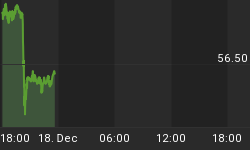With heavy travel over the last week and looming over the next couple of weeks, I figured that I really ought to get an article out before everyone forgets that I write a blog.
It isn't that there is a dearth of topics. I have so much to talk about that I am brimming over; however, between the usual press of our Quarterly Inflation Outlook (which comes out after the CPI number this month) and the press of business-seeking activity, it has been difficult to put virtual pen to virtual paper.
Here is a great example. The New York Fed blog routinely gives me great material, both positive and negative. They've just published an article entitled "Inflation in the Great Recession and New Keynesian Models" with a followup article called "Why Didn't Inflation Collapse in the Great Recession?" The pair of articles could just as easily be entitled, "When Your Model Doesn't Work, Add a Parameter."
I have said on a number of occasions that the credit crisis was a great test of the fundamental Keynesian hypothesis that inflation is caused by growth relative to potential output. And, in the event, that hypothesis was shown to be as bankrupt as Countrywide. I have always liked the way I summed up the state of the argument in 2012:
"The upshot is that we've just come off the biggest recession in 80 years, and inflation barely slowed. In fact, if you remove the effects of the bubble unwind in housing, it didn't slow at all. If growth causes inflation, and if recessions are by definition deflationary, then we should have seen a decline in core prices."
Here is the chart that accompanies that assertion:

Now, this doesn't mean that the monetarists are right, but it assuredly means that the Keynesians are wrong. It is far too much, though, to ask for the peaceful surrender of this view. Instead, the Keynesians (or "New Keynesians" if you prefer) first recalibrated their models, like Goldman did in 2012. (Note, incidentally, that their re-calibrated model called for sharply declining core inflation starting from the moment they published that prediction, converging on 1.4% or so in 2013. In actuality, Median CPI basically went sideways from 2011 until recently. Core inflation declined, but only because of the one-off effect of the sequester, which I don't imagine is what Goldman was forecasting).
What the NY Fed authors have done is to postulate that the real problem with New Keynesian models is that slack isn't measured right, but rather that "the present value of expected future marginal costs is the more meaningful way of measuring slack." It is a wonderful thing to be able to live in a world of models populated with unobservable variables that just happen to take on the right values to make the theory work. Even if, from time to time, one needs to re-calibrate when the model's predictions don't work out.
For the rest of us, the fact that monetarist models predicted that inflation would not plunge in the crisis, and have consistently given predictions wholly consistent with subsequent outcomes - without requiring re-parameterization - is a pretty strong argument that it's likely to be closer to the right way to look at the world...even if it doesn't give us as much to do.
You can follow me @inflation_guy!
Enduring Investments is a registered investment adviser that specializes in solving inflation-related problems. Fill out the contact form at http://www.EnduringInvestments.com/contact and we will send you our latest Quarterly Inflation Outlook. And if you make sure to put your physical mailing address in the "comment" section of the contact form, we will also send you a copy of Michael Ashton's book "Maestro, My Ass!"















